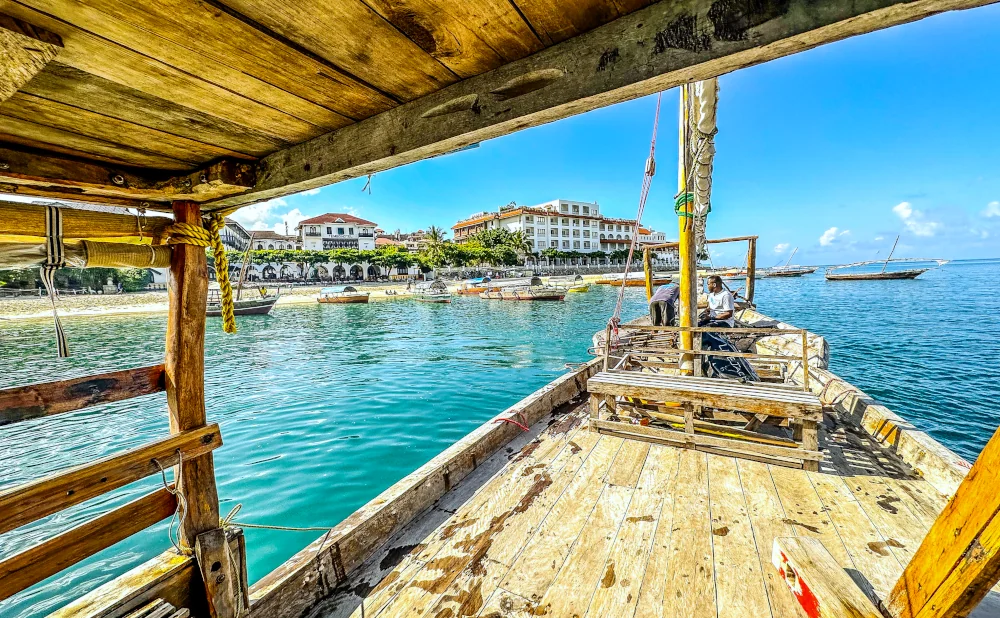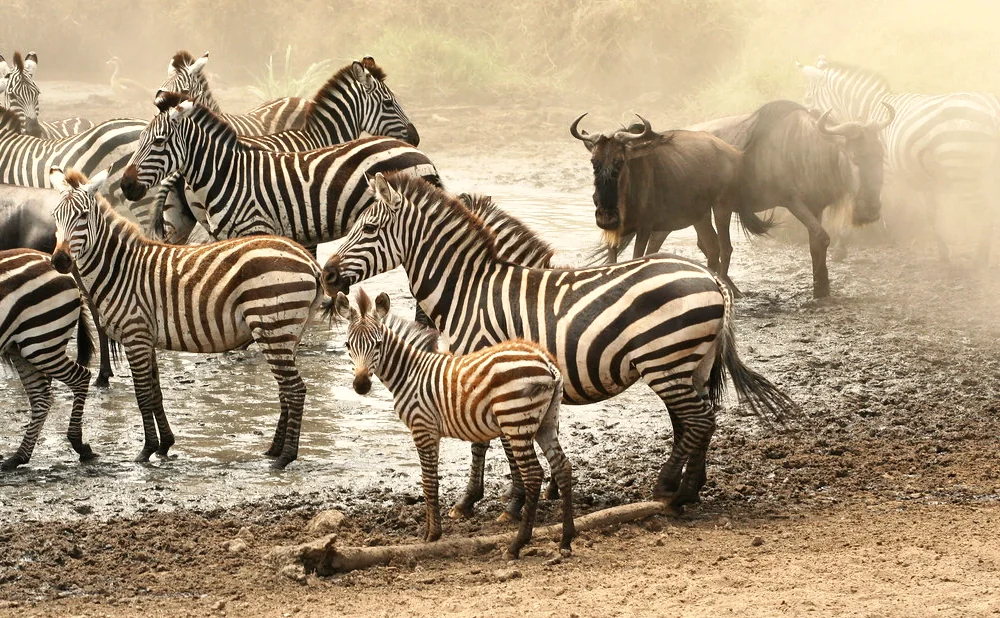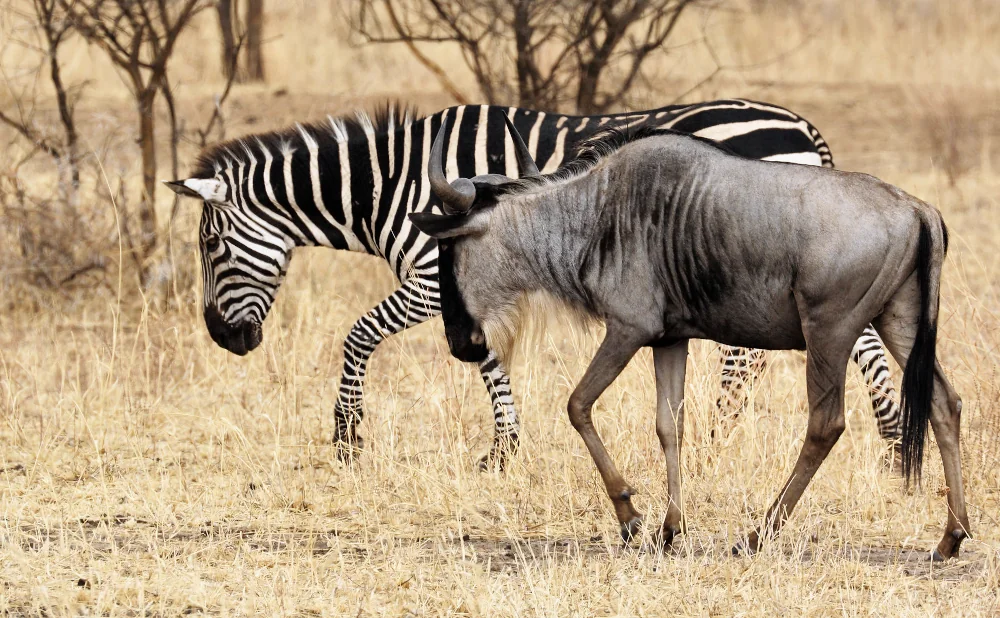Exploring the Wonders of Ngorongoro Conservation Area
Nestled in the heart of northern Tanzania, the Ngorongoro Conservation Area is a breathtaking blend of natural beauty, rich history, and diverse wildlife. This UNESCO World Heritage Site is a must-visit for any traveler seeking to experience the wonders of Tanzania's national parks. From the vast landscapes to the abundant wildlife, Ngorongoro offers a glimpse into the wild heart of Africa. Visitors are often left in awe of the dramatic scenery and the sheer diversity of life that the area supports, making it a top destination for nature lovers and adventurers alike.
The Ngorongoro Conservation Area is a unique blend of conservation and human habitation, where the local Maasai people coexist with the wildlife. This harmonious relationship adds a cultural dimension to the area's ecological significance. The conservation strategies in place aim to balance the needs of the people and the wildlife, ensuring that both can thrive. As a result, Ngorongoro not only serves as a sanctuary for animals but also as a living cultural landscape that tells the story of human adaptation and survival in harmony with nature.
The Geographic Marvel of Ngorongoro
The Ngorongoro Conservation Area spans over 8,292 square kilometers and is home to the world-renowned Ngorongoro Crater. This massive volcanic caldera, formed millions of years ago, is one of the most iconic features of the Tanzanian landscape. The crater is about 610 meters deep and covers an area of approximately 260 square kilometers. Its steep walls create a natural enclosure that protects a diverse range of ecosystems, including grasslands, forests, and swamps.
The crater's unique topography creates a microhabitat that supports a wide variety of plant and animal life. Its lush landscape is a stark contrast to the surrounding arid regions, making it a vital refuge for many species. The area is also home to several lakes and rivers, which provide essential water sources for the wildlife. The natural beauty of the Ngorongoro Crater is a testament to the powerful geological forces that shaped the land millions of years ago, creating a pristine environment that continues to captivate visitors from around the world.
Formation and Significance
The Ngorongoro Crater was formed when a giant volcano erupted and collapsed on itself around two to three million years ago. Today, it is the largest intact and unfilled volcanic caldera in the world. The crater's unique geography supports a diverse range of ecosystems, including grasslands, forests, and swamps, making it a haven for wildlife. The geological history of the crater is not only fascinating but also crucial for understanding the ecological dynamics of the region.
The crater's formation is a reminder of the Earth's ever-changing surface and the natural processes that create and transform landscapes. Its significance extends beyond its geological features; it is also a living laboratory for ecological and evolutionary studies. Scientists and researchers are drawn to Ngorongoro to study its unique ecosystems, which provide insights into conservation biology and habitat management. The area's status as a UNESCO World Heritage Site highlights its global importance and the need to preserve its natural and cultural heritage for future generations.
Rich Biodiversity and Wildlife
The Ngorongoro Conservation Area is not just a geological wonder; it is also a wildlife paradise. The crater's floor is teeming with an impressive array of animals, making it one of the most densely populated African wildlife areas. The diversity of species found within the crater is a reflection of the varied habitats and the abundance of resources available. This biodiversity hotspot is a testament to the effectiveness of conservation efforts in maintaining healthy ecosystems.
The seasonal migration of animals into and out of the crater also adds to its ecological complexity. During the rainy season, the crater becomes a lush haven, attracting herbivores and predators alike. This dynamic environment supports a delicate balance between species, ensuring the survival of both prey and predator. The conservation area also serves as a crucial corridor for migratory species, linking the Serengeti plains with other protected areas in Tanzania.
The Big Five and More
Visitors to Ngorongoro have the chance to see the famous "Big Five" - lions, leopards, elephants, buffaloes, and rhinoceroses. The crater is particularly renowned for its large lion population. Additionally, it is one of the few places in Tanzania where you can spot the endangered black rhinoceros in its natural habitat. This makes Ngorongoro a key location for conservationists working to protect these iconic species from poaching and habitat loss.
Apart from the Big Five, the area hosts numerous other species, including zebras, wildebeests, hippos, and over 400 species of birds. This biodiversity makes Ngorongoro a prime destination for wildlife enthusiasts and bird watchers. The crater's lakes and swamps are a haven for waterfowl, while the grasslands attract a variety of raptors and other terrestrial birds. The abundance of life within the crater is a reflection of the healthy ecosystems that thrive under careful management and conservation strategies.
Conservation Efforts
The Ngorongoro Conservation Area is a model for sustainable tourism and conservation. The area is managed with a focus on preserving its natural resources while promoting tourism. Various conservation initiatives are in place to protect the wildlife and habitats, ensuring that future generations can enjoy this natural wonder. These efforts include anti-poaching measures, habitat restoration projects, and community-based conservation programs that involve local people in protecting their environment.
Collaboration between local communities and conservation authorities is key to the success of these initiatives. By involving the Maasai and other indigenous groups in decision-making processes, conservation efforts are more culturally sensitive and sustainable. This approach not only benefits the wildlife but also supports the livelihoods of the people who depend on the land. The integration of traditional knowledge with modern conservation practices has proven to be an effective strategy in maintaining the ecological integrity of the Ngorongoro Conservation Area.
Cultural Heritage and the Maasai People
The Ngorongoro Conservation Area is not only about wildlife; it is also a place of cultural significance. The Maasai people, known for their distinctive customs and dress, have lived in harmony with the wildlife in this area for centuries. Their presence adds a human dimension to the landscape, showcasing a way of life that is deeply connected to nature. The cultural heritage of the Maasai is an integral part of the Ngorongoro experience, offering visitors a chance to understand the region's history and traditions.
The Maasai's traditional pastoralist lifestyle is a testament to their resilience and adaptability. Despite the challenges posed by modernity and environmental changes, the Maasai have managed to preserve their culture and way of life. Their ability to coexist with the wildlife is a remarkable example of sustainable living, demonstrating the importance of respecting and protecting indigenous cultures in conservation areas.
The Maasai Lifestyle
The Maasai are semi-nomadic pastoralists who have adapted to the harsh environment of the Ngorongoro region. They are known for their vibrant red shukas (cloaks), intricate beadwork, and traditional dances. Visiting a Maasai village offers a unique opportunity to learn about their way of life, traditions, and the challenges they face in a rapidly changing world. The Maasai's knowledge of the land and its resources is invaluable in understanding the complex interactions between humans and the environment.
Their traditional practices, such as rotational grazing, have a positive impact on the ecosystem, helping to maintain the health of the grasslands and prevent overgrazing. By observing the Maasai's sustainable practices, visitors can gain insights into alternative ways of living that prioritize ecological balance. The cultural exchange between tourists and the Maasai can foster greater appreciation and support for indigenous cultures, ensuring their preservation for future generations.
Collaboration and Conservation
The Maasai play a crucial role in the conservation efforts of the Ngorongoro Conservation Area. Their traditional knowledge and sustainable practices contribute to the preservation of the ecosystem. The collaboration between the Maasai and conservation authorities is vital for the area's ecological balance and cultural preservation. This partnership is built on mutual respect and shared goals, recognizing the Maasai as stewards of the land.
Through community-based initiatives, the Maasai are actively involved in decision-making processes related to conservation and tourism development. This inclusive approach ensures that their voices are heard and their needs are met, leading to more effective and equitable conservation outcomes. By empowering the Maasai and other local communities, the Ngorongoro Conservation Area sets a precedent for integrating cultural heritage into conservation strategies, promoting both environmental and social sustainability.
Exploring the Ngorongoro Conservation Area
A visit to the Ngorongoro Conservation Area is an unforgettable experience. Whether you're a nature lover, a history buff, or a cultural enthusiast, there's something for everyone in this remarkable region. The area's diverse attractions offer a wide range of activities, from wildlife safaris to cultural tours, providing visitors with a comprehensive understanding of its natural and cultural heritage. Exploring Ngorongoro is a journey into the heart of Tanzania, where the past and present coexist in a stunning landscape.
The conservation area's accessibility and well-developed infrastructure make it an ideal destination for travelers of all ages and interests. With a variety of accommodation options and guided tours available, visitors can tailor their experience to suit their preferences. Whether you're seeking adventure or relaxation, Ngorongoro offers a unique opportunity to connect with nature and immerse yourself in the rich tapestry of Tanzanian culture.
Safari Adventures
Embark on a safari adventure through the Ngorongoro Crater to witness the incredible wildlife up close. Guided tours are available, providing insights into the area's ecology and the behavior of its inhabitants. The best time to visit is during the dry season, from June to October, when animals gather around water sources, making them easier to spot. Safaris in Ngorongoro are a thrilling experience, offering the chance to see predators on the hunt and herds of herbivores grazing in the open plains.
In addition to game drives, visitors can explore the area on foot with guided walking safaris. These excursions provide a more intimate experience, allowing you to observe the smaller details of the ecosystem and learn about the flora and fauna from experienced guides. Whether you choose a traditional jeep safari or a walking tour, Ngorongoro promises unforgettable encounters with the natural world.
Olduvai Gorge: The Cradle of Mankind
No visit to Ngorongoro is complete without a trip to the nearby Olduvai Gorge. This archaeological site is one of the most important in the world, known as the "Cradle of Mankind." Here, some of the earliest evidence of human evolution has been discovered, offering a fascinating glimpse into our prehistoric past. The gorge's rich fossil record provides invaluable insights into the development of early human ancestors and the environmental conditions they faced.
Visitors to Olduvai Gorge can explore the museum and visitor center, where exhibits showcase the findings of renowned archaeologists such as Louis and Mary Leakey. Guided tours of the site offer a deeper understanding of its significance and the groundbreaking discoveries made there. The combination of natural history and human heritage makes Olduvai Gorge a must-see attraction for anyone interested in the origins of humanity.
Practical Tips for Your Visit
When planning your visit to the Ngorongoro Conservation Area, consider these practical tips:
Accommodation: There are several lodges and campsites within and around the conservation area, catering to different budgets. Booking in advance is recommended, especially during peak season. Choose accommodations that prioritize sustainability and community engagement to support responsible tourism practices.
Guided Tours: Hiring a local guide enhances your experience by providing valuable insights into the area's wildlife and history. Guides are knowledgeable about the best spots for wildlife viewing and can offer a deeper understanding of the local culture and environment.
Respect the Environment: Follow the principles of responsible tourism by minimizing your impact on the environment and respecting local cultures. Adhere to park regulations, avoid disturbing wildlife, and support conservation efforts by choosing eco-friendly tour operators and accommodations.
The Ngorongoro Conservation Area is a testament to the beauty and diversity of Tanzania. Its unique blend of geological wonders, rich biodiversity, and cultural heritage makes it an essential destination for any traveler. By exploring this remarkable region, you not only witness the splendors of nature but also contribute to the conservation efforts that protect it for future generations. The area's commitment to sustainable tourism ensures that visitors can enjoy its wonders while preserving its natural and cultural resources.
Whether you're embarking on a safari, meeting the Maasai people, or exploring ancient human history, the wonders of Ngorongoro will leave a lasting impression on your heart and mind. Plan your golden trip to Tanzania and discover the magic of the Ngorongoro Conservation Area. As you explore this extraordinary landscape, you'll gain a deeper appreciation for the intricate connections between people, wildlife, and the environment, making your visit a truly enriching experience.











